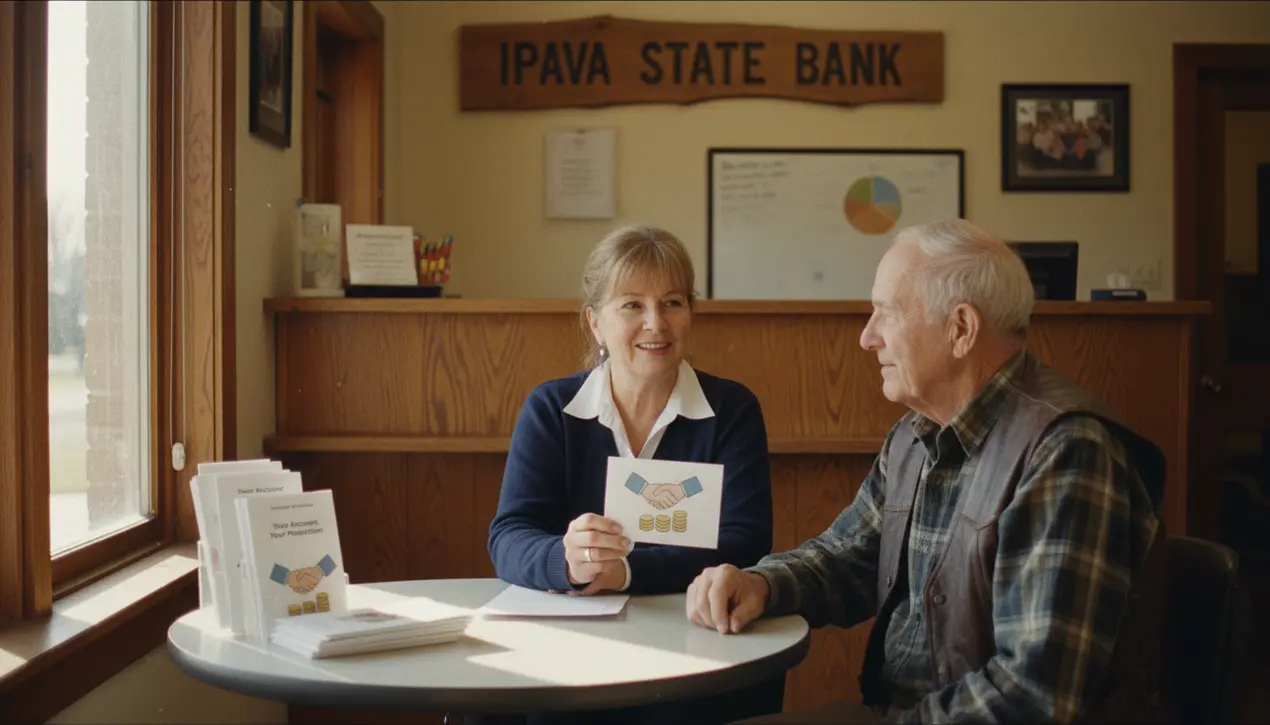
FinancebankingDigital Banking
What if fintech worked for people who don't download fintech?
ET
Ethan Brown
3 hours ago7 min read1 comments
Throughout my career covering fintech startups and personal finance, I've witnessed countless apps promising revolutionary change, yet the most profound innovation I've encountered emerged not from Silicon Valley but from Ipava State Bank, a tiny community institution in western Illinois that fundamentally reimagined financial technology for people who never download fintech apps. In early 2025, this bank, serving a community many would overlook, embedded a small amount of life protection directly into every eligible checking and savings account—no app to install, no complex portals, no extra steps required.The coverage was automatically calculated from customer balances and capped per account, a beautifully simple concept that yielded staggering results. Within just six months, this partnership with the fintech firm Wysh delivered $3.45 million in protection to account holders, spurred a 7% deposit growth, boosted average balances by 4. 8%, and saw a 25% increase in customers reaching maximum coverage levels, all while competing banks were struggling with deposit outflows.This initiative represents a crucial pivot in the financial technology landscape, moving beyond the saturated market of app-dependent users to serve the vast, often ignored demographic that interacts with finance through their trusted local institutions. For organizations like The National Alliance for Financial Literacy and Inclusion (NAFLI), this is the epitome of meaningful progress—technology engineered not merely for viral scale but for genuine, tangible inclusion, a principle any financial coach would champion.The success in Ipava wasn't accidental; it was built on a foundation of astute behavioral design. The 'default-on' approach, where the benefit was automatic, eliminated the friction and psychological 'shame tax' associated with application processes, recognizing that people don't lack interest in protection but often lack the bandwidth to pursue it.Furthermore, the program leveraged the bank's existing trust surplus, reframing the offer from a new product customers had to learn to a clear signal that 'my bank is taking care of me. ' This is a critical lesson for any institution: lead with your relationship, not your partner's technology.The benefit was also meticulously translated to local realities; in a region characterized by single-income households, inherited farm debt, and small-business succession concerns, this protection wasn't a abstract perk but a direct answer to palpable financial risks. The metrics focused on outcomes the customer could genuinely feel—balance stability, account reactivation, and share-of-wallet growth—rather than vanity metrics like app downloads, which aligns perfectly with sound personal finance advice: measure what builds confidence, not just what looks good on a quarterly report.This model fundamentally redefines financial wellness. Most programs demand more from the individual—more apps, more webinars, more habit changes.The Ipava example brilliantly flips this script, requiring the institution to do more so the customer can do less. When protection is seamlessly embedded where money already lives, financial inclusion shifts from a distant aspiration to the default state of the banking relationship.For any bank or credit union looking to replicate this success, the guidance is clear: don't over-engineer choice with overwhelming catalogs, but provide clear, common defaults; don't outsource your story to a tech partner, because customers need to hear it directly from you to feel it; and crucially, don't chase app adoption as the primary goal, but design benefits that can be understood and appreciated in a branch foyer with a simple, ten-second explanation. The bigger invitation here for community institutions is that to win back deposits and relevance, they don't need shinier features but more visible, operationalized care.The lesson from western Illinois isn't that every town is Ipava, but that a trust-first, default-on design philosophy can resonate anywhere people still value a bank that shows up for their best days and provides a safety net for their worst. Ultimately, this proves that true innovation doesn't always manifest as bleeding-edge technology; sometimes, it looks like a familiar bank doing something profoundly timeless—showing up for its people when it matters most, finally making fintech work for everyone.
#featured
#embedded insurance
#community banking
#financial inclusion
#fintech innovation
#default-on design
#trust-first banking
#Wysh
#NAFLI
Stay Informed. Act Smarter.
Get weekly highlights, major headlines, and expert insights — then put your knowledge to work in our live prediction markets.
Related News
Comments
Loading comments...
© 2025 Outpoll Service LTD. All rights reserved.